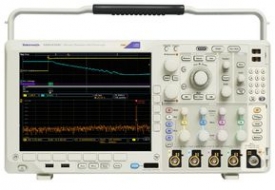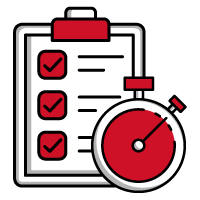Setting Up A Home Test System
February 02, 2021
 |
Social distancing has become a new way of life due to the COVID-19 pandemic and efforts to prevent the spread of the coronavirus. Instead of daily trips to a test lab or electronic manufacturing facility, many engineers are being asked to work remotely to minimize contact with others and the potential spread of the virus. For many, home is the new office and workplace and for electronic circuit designers, testing is a helpful if not essential part of working on electronic designs at home. Most engineers would hardly turn down the opportunity to have one or more racks of their favorite test instruments within arms reach at home. Beyond dealing with the costs of acquiring test instruments for a home system, engineers should consider many factors before creating the home test studio of their dreams.
Cost, of course, is related to capabilities and the types of measurements needed from a home test system. Some measurements are better left to a full-featured test system within a manufacturer’s facilities, such as on-wafer S-parameter measurements of semiconductor devices. The measurement equipment needed for such test applications includes wafer probes and RF/microwave vector network analyzers (VNAs) representing major capital expenses. The cost of each measurement and the equipment needed for it should be considered as part of the preparation for setting up a home test system. In contrast to the purchase of new test equipment, cost can be reduced by renting equipment, purchasing used equipment, or acquiring factory-reconditioned test instruments, such as Tektronix Encore and Keithley equipment, that has been calibrated to original factory specifications.
Combing Through Capabilities
Building a home test station usually starts from the ground up, with something as basic as a portable, battery-powered voltmeter or multimeter, and adds measurement capabilities as needed. Measuring voltage, current, inductance, capacitance, and resistance are essential requirements for any circuit designer and a well-equipped digital multimeter (DMM), once known as an inductance-capacitance-resistance (LCR) meter, can provide useful test data, if it is specified for accurate, repeatable measurements. Low-cost units are available, although providing levels of accuracy that are typically proportional to price. More meaningful basic electrical measurements, especially when required as inputs for computer-aided-design (CAD) circuit design software, are worth the investment in a higher-performance digital multimeter or LCR meter. In terms of sensitivity and accuracy, the Keithley 6517B DMM measures current, voltage, and resistance at rates to 425 readings/s in a compact, half-rack enclosure.
From that starting point, a home test station should be built around the types of measurements to be performed, such as high-power, high-frequency analog, or high-speed digital testing, and the types of devices, components, or systems to be tested. Amplifier testing, for example, can be performed with a spectrum analyzer covering the frequency range of the device under test (DUT), although a test signal source such as a synthesized signal generator also covering the frequency range of the DUT will be needed to drive the amplifier. After the basic test requirements have been established, such as whether a signal generator can produce a test signal that is high enough in level to reach the specified maximum input power of an amplifier to be tested, secondary requirements can be sought, such as dynamic range and total harmonic distortion (THD) of the test signal source and the spectrum analyzer.
Of course, an amplifier is just one example of a DUT and many different types of amplifiers may need to be tested. It is important to realize that the measurement requirements for each different DUT and even each type of amplifier can be much different. The parameters to be measured, such as the third-order intercept point (IP3) for a power amplifier versus noise figure for a low-noise amplifier (LNA) can be much different and call for test instruments with much different requirements. When lining up the measurement equipment for a home test system, it can be helpful to jot down the types of DUTs to be tested, the required measurements to be performed, and the DUT performance parameters to be characterized. By comparing the different factors, it is easier to learn whether a single signal source and/or analyzer can meet all the requirements.
Starting with a list of the measurements helps to determine a minimum list of test hardware and software needed to perform those measurements. As the measurements change, the types of test equipment needed to perform them will change. While a high-speed digital storage oscilloscope (DSO) may not be needed for testing an RF/microwave power amplifier, it will be essential for evaluating the performance of a high-speed digital component. And for high-speed digital circuit testing, a DSO is a starting point, a step beyond a DMM. For example, mixed domain oscilloscopes (MDOs) in the four-channel MDO4104C from Tektronix is available with analog bandwidths of 1 GHz and sampling rates to 5 GSamples/s to analyze high-speed signals. The versatile instruments can even switch from the time domain to the frequency domain by including an optional spectrum analyzer; built-in spectrum analyzers are available with bandwidths of 9 kHz to 3 GHz or 9 kHz to 6 GHz, all in a compact unit with carrying handle for portability.
Deciding on the hardware and software needed for a home test system is one thing, deciding where to put it is another. Placement of a home test station is an important consideration since it should be located where it can be of the most use during daily, working-at-home routines. The more accessible a test system is, the more it will be used. A system with 24 hr access can be used at any time during the day, especially when those offbeat measurement ideas come late at night. Proximity to a home office may also be useful, especially when the computer in a home office must also function as the controller for an ATE setup.
Keep Within Reach
The instruments within a home test system, whether rack-mounted or on a bench, should be positioned for ease of use and for optimum performance. Performance can be degraded by nearby sources of electromagnetic interference (EMI). Also, depending upon how much power the test instruments consume and how much heat they generate, they should be in a location with proper ventilation. In an equipment rack, instruments that generate high amounts of heat can be teamed with an intake fan at the bottom of a rack and an exhaust fan at the top of a rack.
At the same time, performance can be optimized, such as in the case of the amplifier measurements, by using the shortest, lowest loss interconnecting test cables (from test source to amplifier and from amplifier to spectrum analyzer) as possible. Careful positioning of the measurement instruments in a home test system can make it possible to use the shortest interconnecting cables possible. Some planning on placement, such as sketching a block diagram of the system, can also provide room for growth when additional test capabilities are needed.
Having sufficient power is a concern when setting up a home test system. Most residential power networks are equipped for 110 V AC power and instruments for single-phase power at that voltage are usually safe choices. But some instruments may be designed for three-phase power at much higher voltages and will be incompatible with most home power networks. It is important to check the input power requirements of any test instrument for a home test system, to make sure the instruments do not exceed the restrictions of residential power systems. For consistent, repeatable active device and component measurements, a reliable power supply such as the Keysight / Agilent E36313A DC Power Supply provides three highly regulated outputs with total voltage range of +/-25 V DC and low noise.
These are just a few examples of the test instruments that could be quite useful in a home test system; many different instruments from different manufacturers can be searched for rental or sale from the Axiom Test Equipment (www.axiomtest.com) website. Setting up a home test system may take time, but it can be worth it, especially with travel endangered by the current pandemic. Much should be considered when setting up the system and this blog only scratches the surface.
Back to BLOG








